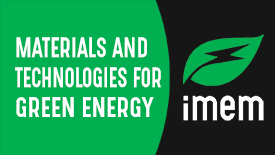Chemical Bath Deposition (CBD) is a technique for producing films of inorganic and non-metallic solid compounds, often metal oxides and chalcogenides (sulphides, selenides, tellurides). The substrate is dipped several times in an aqueous solution containing the precursors of the material in a thermostatic bath, and the reaction takes place directly on the substrate surface. Despite the experimental simplicity, understanding the mechanisms involved in these systems reaction is not simple. The heterogeneous literature on CBD demonstrates the complexity of the technique, in particular in the case of cadmium sulfide, the most used buffer layer for making high efficiency CIGS cells. For this reason it is necessary, once the growth homogeneity is attained, to verify the adaptation of the CBD to the specific absorber layer to verify the compatibility. This passage is crucial for a unique material such as CIGS grown via LT-PED, fully developed at IMEM-CNR, which shows inevitable differences with respect to other standard techniques.









